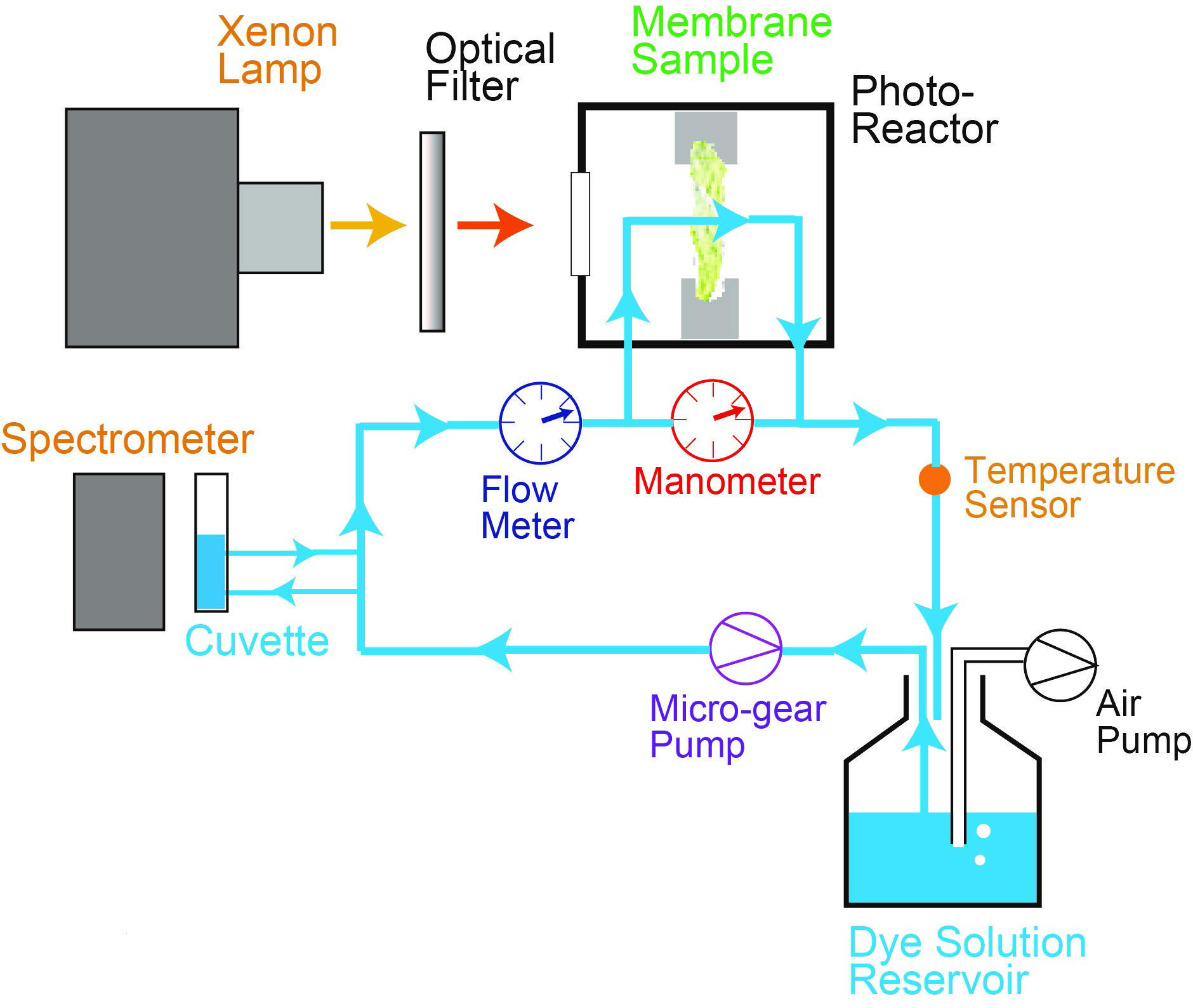This paper describes a novel set-up for characterization of the performance of membranes designed for purification of water. It involves a recirculatory system, with continuous monitoring of the concentration in the water of a representative pollutant (Methylene Blue). Pressures, flow rates and temperatures are also measured. Results, in the form of rate constants for reduction in pollutant concentration, are presented for three different types of membrane, all of which incorporate relatively high surface areas of titania and have permeability values in a range making them suitable for this type of processing (∼10−11 m2).
These results are rationalized in terms of the surface areas of the membranes, and the likely water flow characteristics within them. It is concluded that all of the titania surfaces within them have similar efficiencies for photo-catalytic oxidation of pollutants, but there are significant differences in the ways that the water is exposed to these surfaces, and hence in the pollutant oxidation rates. These points are relevant to the optimization of membrane design for this purpose.
Figure: Schematic depiction of the COMPORM (Continuous Monitoring of Photo-catalytic Oxidation during Recirculation through Membranes) facility.
M Coto, SC Troughton, J Duan, RV Kumar & TW Clyne, "Development and assessment of photo-catalytic membranes for water purification using solar radiation", Applied Surface Science 433 (2018) 101–107

